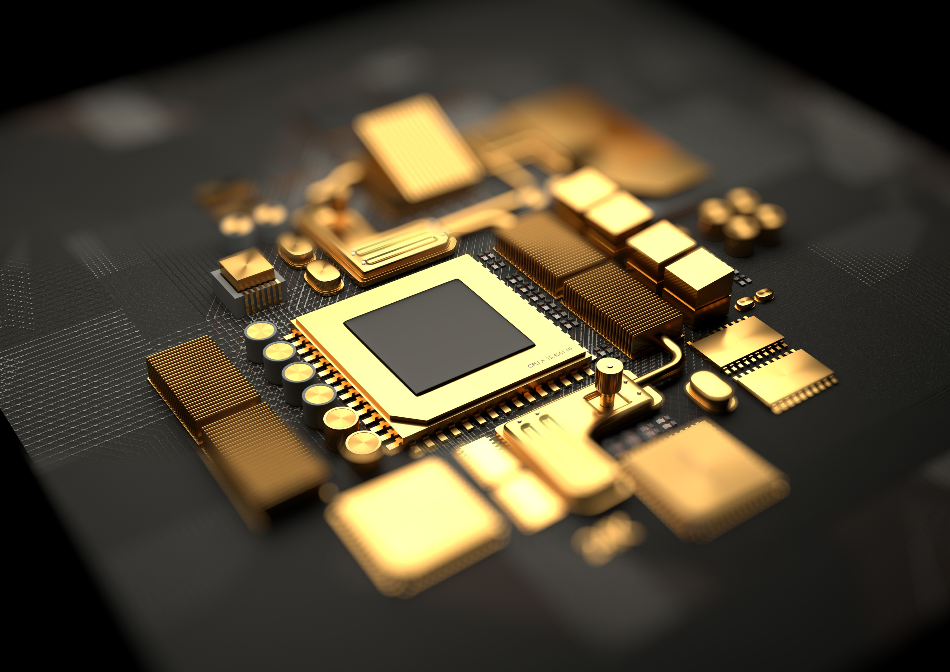Nov 6 2009

solarseven / Shutterstock
In many electronic applications, gold is the most preferred material. It is mainly used in information technology, telecommunications, and other high-performance and safety-critical applications. A close look at one’s mobile phone will reveal the use of gold-plated contacts.
When an old computer is dismantled, one can possibly find gold-plated edge connectors on the circuit boards. Due to the development of these sectors, the long-term yearly consumption of gold in electronics is rapidly growing. The 2007 estimates point toward the fact that nearly 280 tons of gold went into making electronics and electrical components. Gold is generally the material of choice in applications where the circuitry is complex, the voltages are small, or the required reliability is high.
Material Properties of Gold
The useful material properties of gold are excellent resistance to corrosion, ease of working with it, and high electrical and thermal conductivity. Copper and silver are the only metals that are better conductors of electricity, but they do not have comparable resistance to corrosion or tarnishing. Under certain conditions, where most of the other metals either tarnish or corrode away, gold stays inert and highly durable.
Therefore, in applications where resistance to corrosion or tarnish is necessary, it is normal to use either gold or a gold alloy, or to plate gold onto a less noble metal. In the case of electronic applications, the most important property is the resistance of gold to environmental effects. It implies that the technical performance of gold electroplating or gold bonding wires remains substantially unchanged with respect to time.
Optimum Use of Gold
In general, if the equipment is more sophisticated, then there is a greater need for reliability, and in turn greater requirement to leverage the benefits of gold as a material. This implies that in computers, telecommunications, defense systems, and automotive electronics, where safety is considered crucial, the use of gold is unavoidable.
In the electronic sector, gold is used for developing high-strength connecting wires and better wetting solder alloys. Breakthroughs needed for information technology in the upcoming years will be highly integrated electronic devices, which are designed and fabricated on the nanometer scale (one-billionth of a meter).
Thanks to its resistance to oxidation and mechanical strength at the very small dimensions defined by nanotechnology, gold will be an unavoidable element for nanoscale electronic devices. The reliability of gold is a necessary characteristic for the growing use of electronic components in cars.